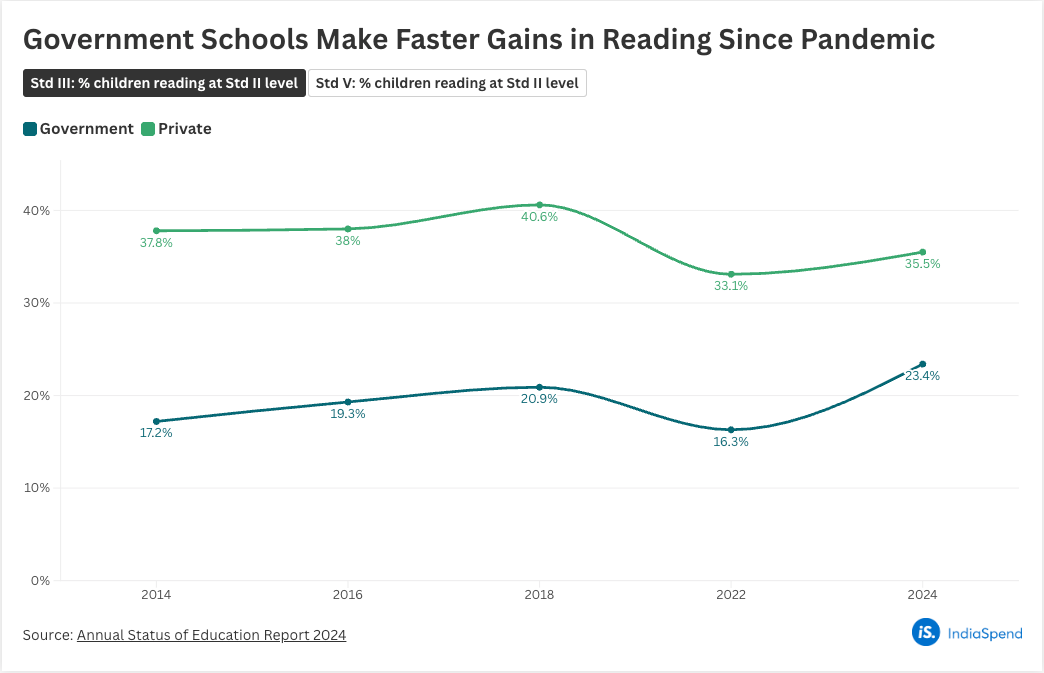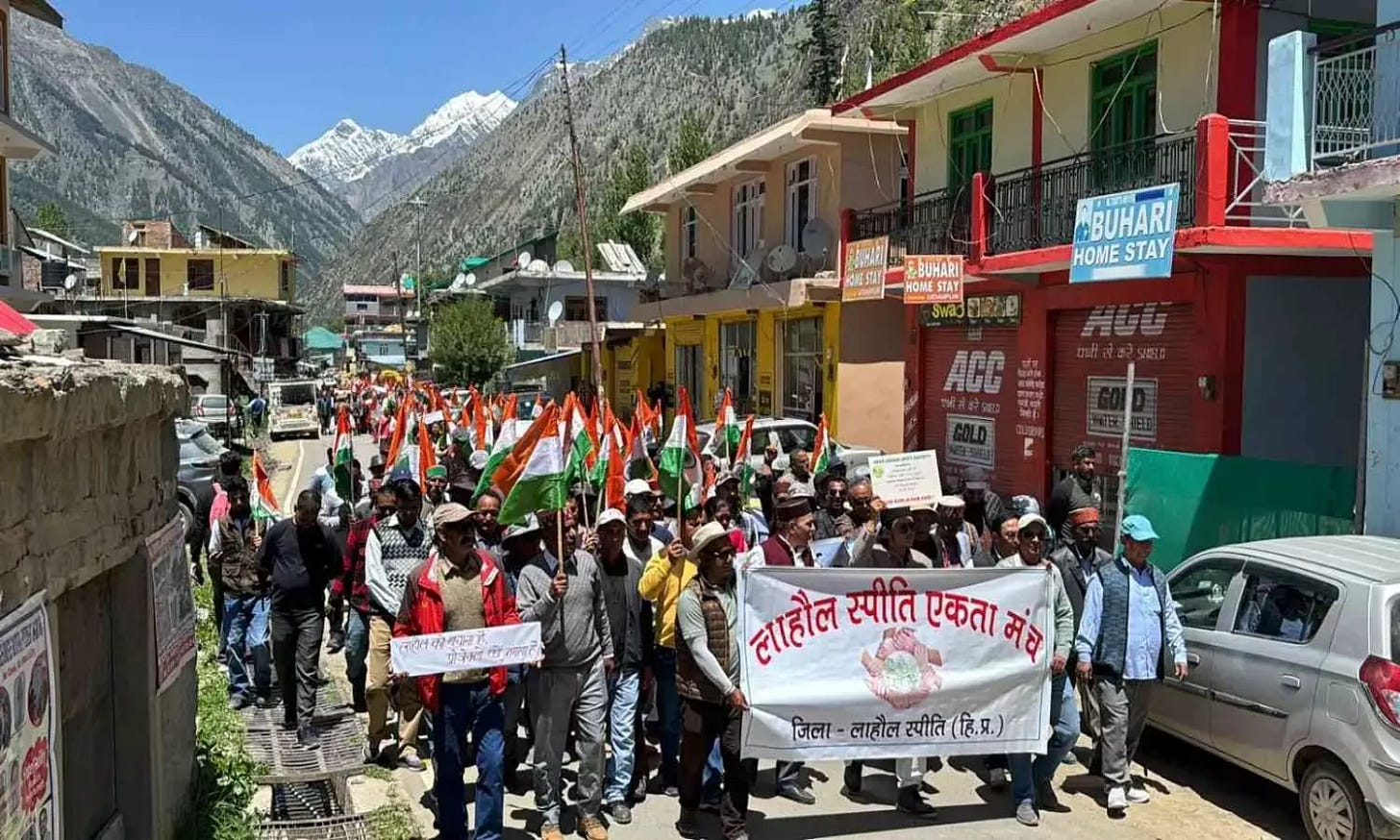Learning Gains, Falling Numbers
This week, learning in India's private & government schools, UP's efforts to protect its wetlands, the effect of US tariffs on Bhadohi's carpet industry
India’s classrooms are changing, its wetlands are under stress, the fragile Himalayas are at a crossroads, and a global trade shock threatens Bhadohi’s artisans. From education to ecology to livelihoods, this week’s stories trace how policy decisions ripple into everyday lives, and why listening to those on the frontlines matters more than ever.
Government Schools Close the Gap on Learning Outcomes
Students in India’s government schools are steadily catching up with private peers in early learning, an IndiaSpend analysis of ASER 2024 data shows. In grade III, 23.4% of government school students could read at a grade II level in 2024, up from 16.3% two years earlier. Arithmetic outcomes show similar trends, with faster improvements in government schools narrowing the historic divide.
Sadly, though, India’s school landscape is shrinking. Government schools have declined to 1.02 million, with thousands being shut down each year; enrolments are falling, and private unaided schools are gaining ground. In five charts, Vijay Jadhav tracks the changing balance between access, enrolment, and outcomes.
Mapped, Protected, Contested: Uttar Pradesh’s Wetlands at a Crossroads
In 2016, Uttar Pradesh moved to secure 133,484 wetlands by integrating them into land records under Category 6(1), making them legally untransferable. But as the Talab Baghel case in Bahraich shows, mapping wetlands is easier than conserving them.
Satellite images reveal shrinking water bodies, expanding farmland, and eco-tourism pressures colliding with fragile ecosystems. Despite initiatives like Amrit Dharohar and Ramsar protections, conservation efforts face fierce local resistance, encroachment disputes, and ecological stress. Aishwarya Tripathi reports
Hydropower Pact Sparks Ecological Alarm in Lahaul-Spiti
A historic pact between Himachal Pradesh and Telangana will jointly develop 520 MW of hydropower on the Chandrabhaga (Chenab) river, promising renewable energy and free phased power. But in the fragile, high-altitude Lahaul-Spiti valley, the deal has triggered intense protests.
Locals warn of cascading disasters like the Sikkim GLOFs of 2023, citing melting glaciers, seismic instability, and sacred landscapes. Experts caution that unplanned hydropower in this climate-sensitive Himalayan basin risks amplifying floods, landslides, and biodiversity loss. The area has now become a flashpoint where energy ambitions collide with ecological survival. For IndiaSpend Hindi, a Surinder Kumar ground report
US Tariffs Push Bhadohi’s Carpet Industry to the Brink
Bhadohi, globally known as India’s “carpet city,” faces a severe economic jolt as steep US tariffs threaten a ₹17,000-crore industry that employs over 2 million workers. With 60% of Bhadohi's exports bound for the US, producers fear that the 50% duty could cripple livelihoods and stall an age-old craft.
Warehouses are filling up, new orders are scarce, and exporters are pleading for government support. In a video story for IndiaSpend Hindi, Mithilesh Dhar Dubey looks at how global trade policies are unravelling the lives of Bhadohi’s artisans and weavers.
That’s all for this week from IndiaSpend, folks. If you believe these stories matter, do share them widely. Stay safe, be well, see you next week.





